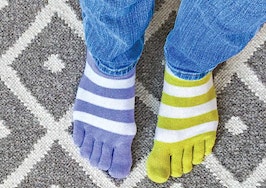There’s no dress code in real estate, and most agents defer to their best business casual attire. However, there is a saying along the lines of, “Dress good, do good,” that may hold some truth, depending on the individual. Dressing the part has actually been proven to enhance productivity in some instances.
Even so, there are no clear rules, and getting ready can turn into a more stressful, time-consuming situation than necessary. To circumvent wardrobe dilemmas, keep these three strategies in mind:
Play it by ear
Consider your audience before you set a dress code for the day. Commercial real estate agents, for instance, might be required (or at least highly encouraged) to don a suit when meeting with business professionals. Then, when they swing by the latest tech startup office, they can switch back into jeans and a T-shirt to make their clients feel more comfortable.
[Tweet “Clothing advice: Consider your audience before you set a dress code for the day.”]
No matter the situation, most agents opt for business casual. Simple khakis and a button-down shirt usually fall in the safe zone for real estate wardrobes. For women, a pencil skirt or dress pants with a nice top is usually appropriate.
Make an impression
Sometimes you may be more concerned about standing out and less about fitting in. Dress up when you’re looking to impress — especially when there’s a lot of money on the line, like an expensive open house where potential buyers are more traditional or inclined to notice fashion.
Suits should be commonplace at some events, like networking parties, award ceremonies, company meetings and open houses.
If you are opting for a suit, go with a tailored fit. It doesn’t have to be skin-tight, but baggy, generic suits look juvenile. Keep the cufflinks and pocket squares to a minimum unless you’re a known fashionista in the industry.
[Tweet “Clothing advice: If you are opting for a suit, go with a tailored fit.”]
When you know a few others are dressing up but you don’t feel it’s the appropriate attire, do what makes you feel comfortable. After all, you have to wear it the whole night while conversing with people. Lack of confidence may hurt new relationships or at least discourage you from being your best.
You may want to transition out of basic daywear into something a little more stylish. If you feel that’s going to promote your brand, help bring in new business and make you more successful, invest in a few good suits.
For style savings, consider apps like Gilt, which gives amazing flash deals on designer duds. You can sign up for email alerts so you’re always in the know about the next big sale. Services like Trunk Club are great for men who want to amp up their style but don’t know where to begin. A personal stylist will tailor your shopping cart to match your personality and the pieces you already own, so you don’t end up splurging on an entirely new wardrobe.
Always err on the side of caution
As a general rule, it’s usually better to be overdressed than underdressed. Now, don’t wear a tuxedo to every event you’re unsure of, but a simple suit when you’re at a nice venue that doesn’t have a dress code is always smart.
Keep in mind that sometimes dressing too suave might make you appear ostentatious. It’s rare, but people judge.
Let’s say you’re attending a client meeting but aren’t totally sure what to wear for the day. First, gauge your relationship with the other party. Maybe do a little sleuthing and check out their Facebook to see if they prefer fancy clothing, then determine what to wear for the meeting.
Although you might look out of place, you won’t seriously offend anyone when you’re dressed nice. Alternatively, you can offend if you underdress.
In terms of client meetings, dressing up makes you look more professional and serious. If a client comments on your dress-up attire, say you didn’t have time to change after your last business meeting.
[Tweet “Clothing advice: Dressing up makes you look more professional.”]
For major gatherings, always check and recheck invitations or ask other attendees before you make individual decisions. If there is a dress code that you fail to notice, you’ll end up looking foolish.
Once you have a full closet, keep an inventory with apps like Closet+ (iOS), Stylicious (Android, iOS) or Stylebook (iOS). It might take some time to set up your personal inventory, but it’s like having a personal stylist in your back pocket.
Inman Connect San Francisco is right around the corner — register now and save $200!



